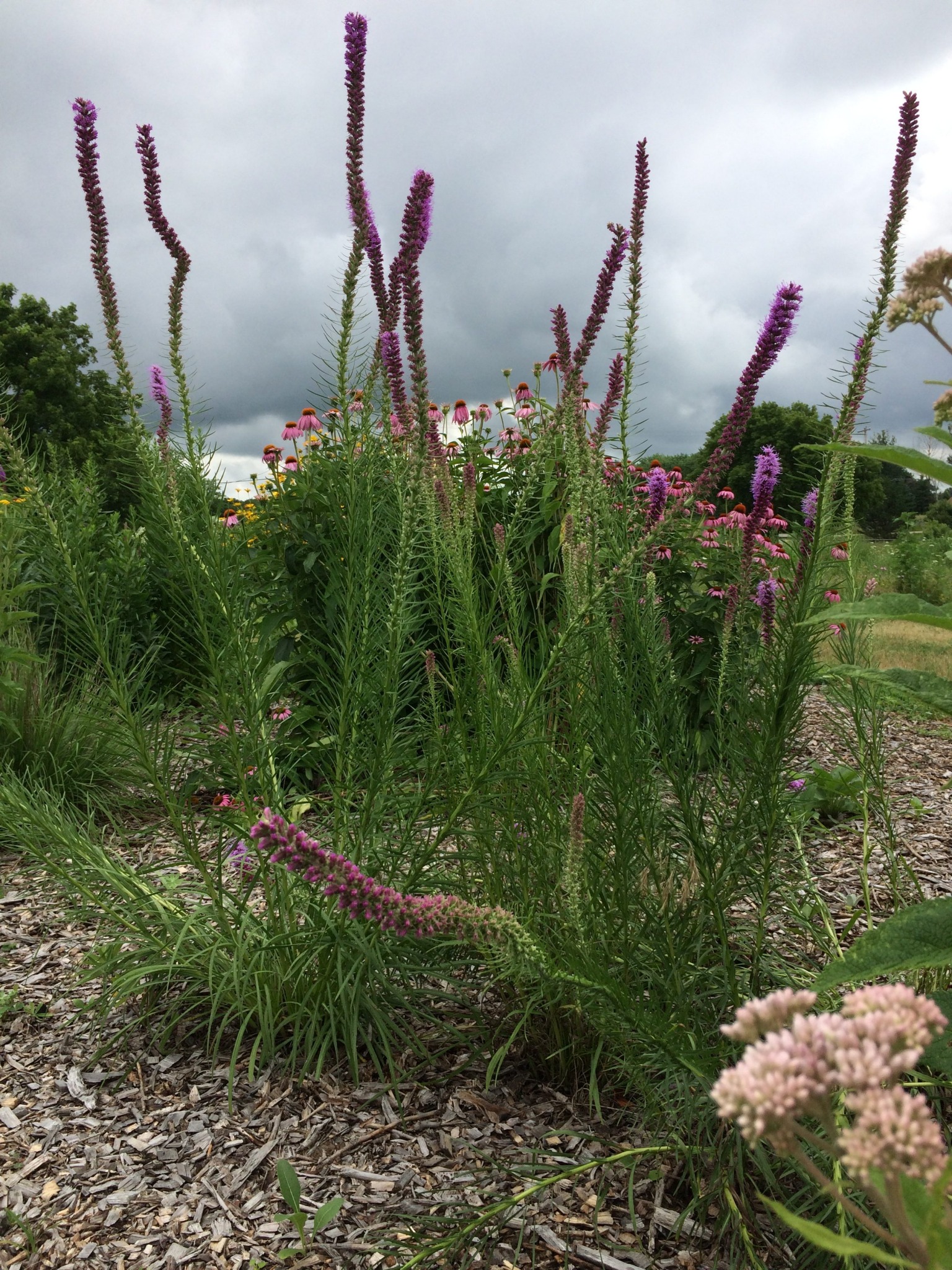Description
OUT OF STOCK
Tall, erect, purplish- pink spike in August-September
Tall, erect, purplish- pink spike in August-September
OUT OF STOCK
Tall, erect, purplish- pink spike in August-September
OUT OF STOCK
Lemon yellow silky petals bloom late spring to early fall on this tough-as-nails native
Size: 9-18” x 12-15”
Care: sun in well-drained soil, drought tolerant
Native: Great Plains: Central Canada to TX, Michigan to Montana, WI native
1st described in 1818 by Thomas Nuttall, English planthunter who collected hundreds of “new” plants in North America. Caly is Greek for calyx; lophos for “the back of the neck; crest of a hill or helmet” serrulatus means “minutely serrate” or “saw-toothed” describing the leaf margins.
August – October, classic violet, pink or magenta daisies
Size: 3-4' x 24"
Care: Full sun dry to moist soil. Heat and drought tolerant.
Native: Vt to Alabama, west to N. M., Wisconsin native
Wildlife Value: Nectar source for many butterflies - Checkered white and Checkered skippers, Spring azure, Pearl crescent, Buckeye, Painted lady, Fiery skip butterfly, Sachem, Sleepy orange, Silver-spotted skipper and Monarch. Host for caterpillars Wavy-lined emerald moth.
Aster means star, referring to the flower’s form. For the Cherokee New England aster tea cured fevers and diarrhea. Roots remedied pain and inflammation of the nose and throat. Introduced to garden cultivation by John Tradescant the Younger (1608-1662) in 1637 when he sent it to England where upon borders of New England aster became common. Washington grew New England Aster at Mount Vernon.
OUT OF STOCK
Clean white variegated leaves and flowers (bracts), very showy midsummer to fall. Use caution with internal milky sap.
Size: 18” x 10”
Care: sun moist well-drained soil, drought tolerant.
Native: Plains from Dakota to Texas
Size: Wonderful cut flower just be careful of the milky sap.
Sioux crushed leaves in water and boiled it for a liniment to remedy swelling; boiled whole leaves in water to increase milk for new mothers. Collected on Lewis and Clark expedition three times, once July 28, 1806 along Marias River. A “most elegant species.” Breck, 1851.
Purplish-blue spikes from July to October, very fragrant.
Size: 2-3' x 12"
Care: Full sun in well-drained soil, heat and drought tolerant.
Native: North America
Wildlife Value: Skipper butterflies and Rusty patched Bumble Bees love Anise hyssop’s nectar, Deer resistant.
The name Agastache is from Greek agan and stachys meaning much like an ear of wheat referring to the shape of the flower spike. Anise hyssop leaves were used by American Americans of the Missouri River region to make tea and as a sweetener in cooking. For Cheyenne it relieved chest pain due to coughing or to a dispirited heart. Listed as an aromatic herb in Bernard McMahon’s 1805 book, American Gardener’s Calendar.

